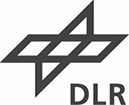OBC-SA
Project Description
Computer systems in space must have an ever-increasing processing power to perform tasks such as the (on-the-fly) pre-processing of large amounts of data from sophisticated experiments and payloads or even the on-board autonomous and real-time computation of control commands. This is the only way in which spacecraft can perform complex docking maneuvers or landing approaches independently. In addition to high performance requirements, the on-board computer systems must be embedded in the often redundant communication infrastructure inside a spacecraft and support redundant connections for instruments with very high data rates in the gigabit range.
The OBC-SA “On-Board Computer System Architecture” project aims to develop an architecture for computing platforms for space, able to fulfil future requirements regarding processing power, data throughput, availability and reliability. Multiple milestones for various technological fields were defined for analysing and evaluating if these developments can be transferred into the space domain and its economic implications. Core elements of this system architecture are realised in hardware and software and will be integrated to a technology demonstrator, which is the core focus of this project. The technology demonstrator is evaluated regarding the targeted performance parameters.
This project has received funding from DLR (German Aerospace Center) under grant agreement no 50RM1212.
TTTech is responsible for the networking sub-project “Deterministic Real-Time Ethernet for Space Computing Platforms”. Within this sub-project, Deterministic Ethernet technology is further developed to target the specific requirements for future space applications in a European context. In particular, a cPCI serial switch is developed for the use of the TTEthernet communication protocol, drivers for the real-time operating system PikeOS are implemented and the respective tools for configuration are further developed.
Arjan Geven
